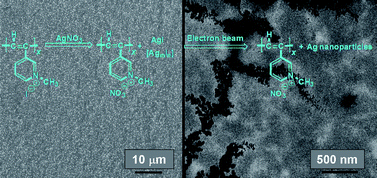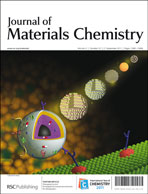Suspensions containing quaternized poly(pyridylacetylene) (PPyA) and AgX (X = Br and I) were obtained by simply mixing PPyA with water soluble silver salts. The suspensions were stable in the dark at room temperature, and could be cast into uniform films. After exposure to UV-light for sufficient time, Ag nanoparticles were in situ generated in the polymer matrix via photochemical reaction. By adjusting the Ag+ contents and the halide counterions, the size of Ag particles, the conductivity of the composite films, and the surface morphology of the composites were tuned. The quaternized PPyA absorbed UV-light efficiently and the photogenerated halogen caused fast degradation of the polymers. Thus the photo-chemical process concomitantly resulted in the formation of Ag nanoparticles and highly porous films. These properties offer the composite materials potential in the construction of UV-eroding conductive patterns, embedded metal nanostructures, and porous films for loading metal particles as catalyst.

You have access to this article
 Please wait while we load your content...
Something went wrong. Try again?
Please wait while we load your content...
Something went wrong. Try again?


 Please wait while we load your content...
Please wait while we load your content...